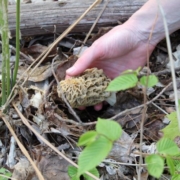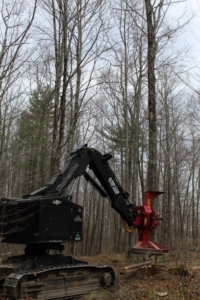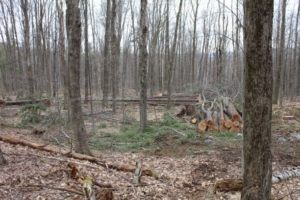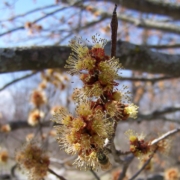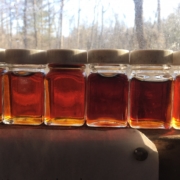Morel vs False Morel
Mushroom foraging can be an intimidating hobby on account of the whole some-can-kill-you-if-you-eat-them part. But the reality is that anyone with a reasonable amount of caution, commonsense, and a desire to learn can quickly reach a point where the whole endeavor is as dangerous as crossing a road.
Morel season is underway in southern Vermont, and they’re a great mushroom for a beginner to start with, both because they’re distinctive and delicious. Of course, if you’re new to mushroom foraging, and you’re appropriately cautious and commonsensical, you’ve done your homework and learned that there are these things called false morels, which are toxic and potentially deadly.
Here’s a closer look.
There are two common quote unquote look-alike species that share the woods with morels. One is Verpa spp. (V. bohemica and V. conica are the ones I’m aware of that grow around here). Verpas have a cap and stem that’s sort of like a morel on the outside, but inside they’re filled with cottony material, whereas morels have hollow interiors. I was not able to find one this morning to photograph. Verpa caps overlap their stem and connect at the top, whereas morel caps and stems are seamless. But that might be too much information. Just remember that if there’s cottony material inside, that’s bad. I’ve heard of people eating Verpas on purpose, but most books suggest to steer clear.
The truly toxic look-alikes, and the phrase look-alike is a bit of a stretch, are Gyromitra species. (I believe the one pictured here is G. brunnea.)
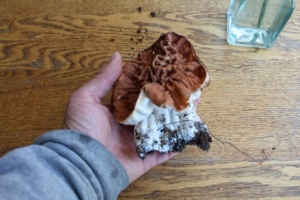
They’re sort of brain-looking in places, which I guess might confuse a novice. But they’re built much squatter than a morel – mature they’re almost round – and any ridges and pits on the cap will not be uniform. You can see from the close-up picture here that the stems are not hollow, so there’s really no mistaking the two if you know this.
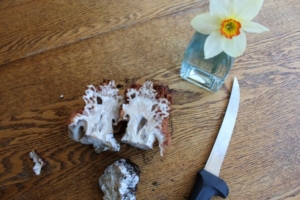
A Gyromitra cut in half. Note substantial, pitted interior.
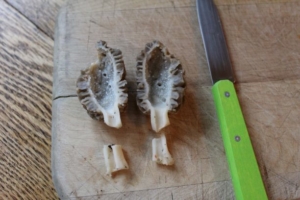
A morel, cut in half. Note hollow interior.
One of the pleasures of working here is that we don’t have a legal department that frowns upon stories about eating mushrooms. No one to suggest we put a disclaimer imploring readers to NEVER ID a mushroom based on something they read online, which undercuts the story and treats you, the reader, like a young child. The way we see things is that if you’ve read this far, you’re an intelligent, curious person looking for reasonable information that you’ll use, along with other sources, to triangulate truth. We hope this is helpful.

